The first Mission of Our Lady of the Angles of Porciuncula (Mission Nuestra Señora de los Ángeles de Porciúncula de los Pecos) was completed in 1625. The foundation stretches 150 feet from altar to entrance and are 22 feet thick in some places. This is the reverse direction of the later church built upon it. It is estimated that 300,000 40-pound adobe bricks were used. The exterior would have been white-washed and it had six bell towers.

The ruins were big...

... but this illustrated overlay shows of how truly massive the first church was!
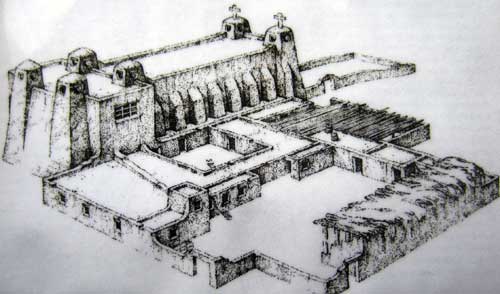
Layout of the first church
It was the job of the Franciscan priests to teach the locals to become Catholic subjects of the Spanish empire. The church functioned for 55 years but was burned and destroyed during the Pueblo Revolt of 1680.


But the Spanish returned and in 1717 a new, much smaller church was completed.... the ruins of which lay before us now. The pueblo then entered into a long decline due to disease, famine and Comanche raids, and in 1838 the few remaining residents left. Wind, water and vandalism have reduced the building to what it is today.

Layout of the second smaller church


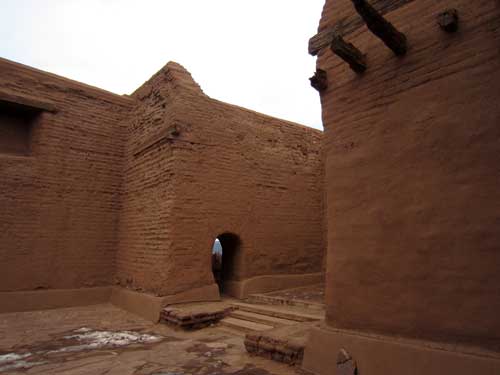

There was supposedly still some evidence of decorative carving on the beams, but I couldn't really find anything obvious.

These passages were originally covered with a ceiling, so were rather dark. The small rooms served as sleeping rooms, workrooms, storerooms, a kitchen and dining room, etc.

Adobe is the Spanish word for 'mud brick.' They are made from sand, clay, water and some kind of fibrous material such as straw. They are shaped using molds and then dried in the sun.


This is an original drain from the first church. Water ran off the sloped roof of the passageway into the patio and was collected in a cistern at the other end.

This kiva was added after the rebellion.

Adolph Bandelier, a prominent name in early archeology in the area, inspects the church in the 1880's.
The visitor center was wonderfully done with lots of information, interesting displays and splendid illustrations!



Everything was written in both English and Spanish.




Life in the pueblo


Trading with the Apache

Arrival of the Spanish
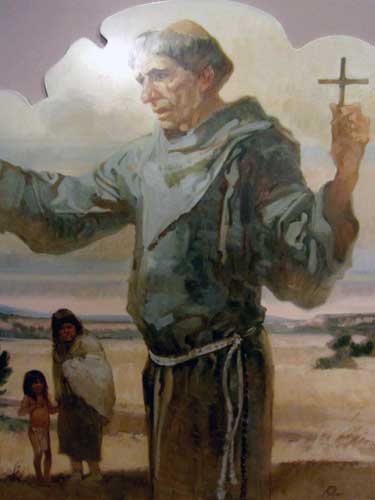
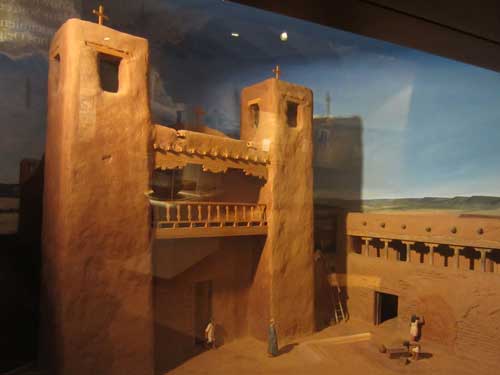
The first church

Making adobe bricks

Ah, that's what the carvings looked like!

Rawhide bags filled with silver were soaked in water. This caused shrinking which held the coins firmly inside. The only jingle-jangling would be from your spurs now!
We talked with the ranger for a while. Apparently many people who work at these places aren't actual rangers but just volunteers. They travel around from national park to monument to historical site, working for several months at a time. I picked up an application since I never know where my life will lead me!
We set out around 3 pm and followed Highway 14, known as the Turquoise Trail National Scenic Byway. It was getting dusky when we briefly stopped at the tiny, artsy town of Madrid. There wasn't a lot going on. I suspect it's more of a summer tourist spot. We walked down the main street (basically the only street in town) then continued on.



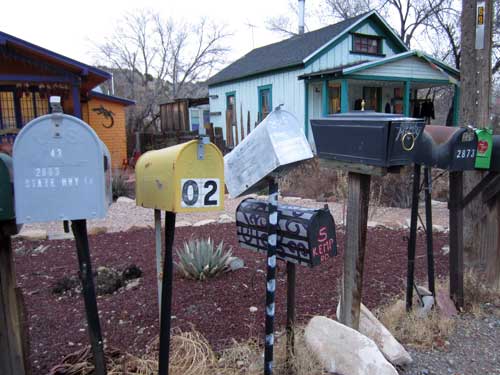

Old mining equipment becomes art.

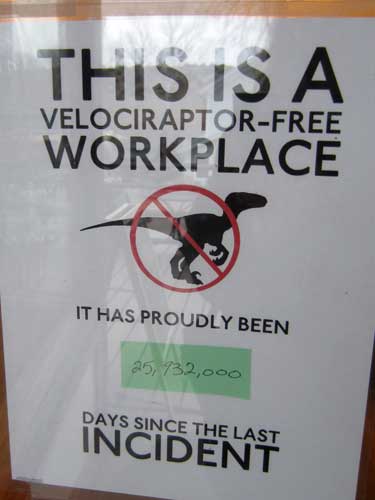
Thank goodness!
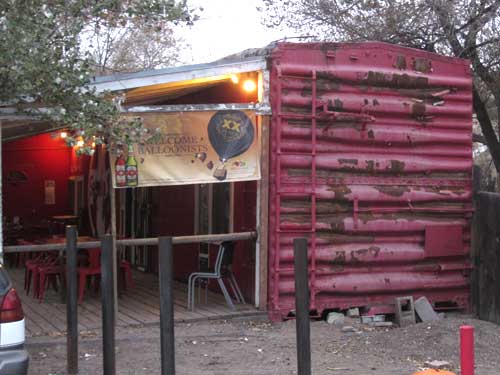
A train boxcar converted into a restaurant!
We lost the final rays of the day as we approached Albuquerque. Darren's friend had offered us a couple couches to crash on for the night. He lived up in the hills and by the time we arrived, it was quite dark. We spent a few social hours then tried to catch a few z's.



